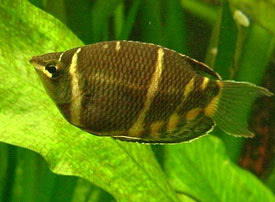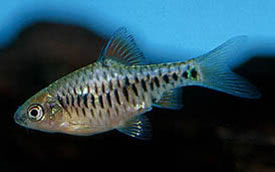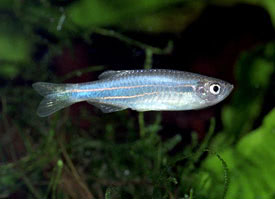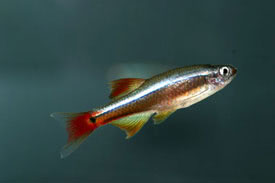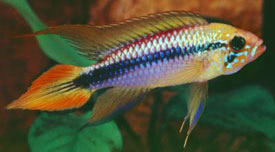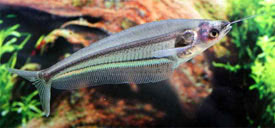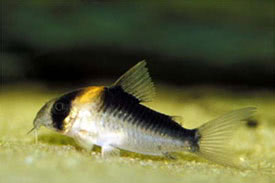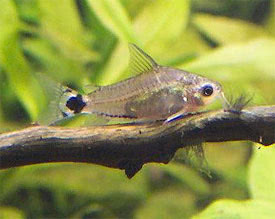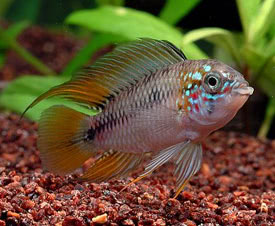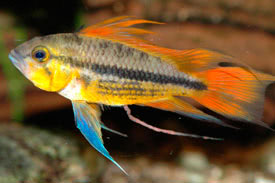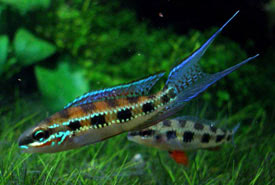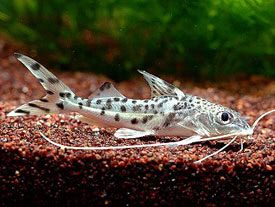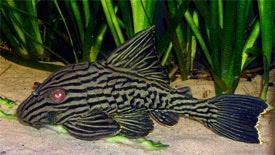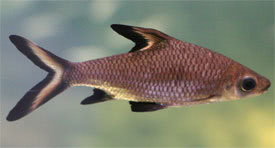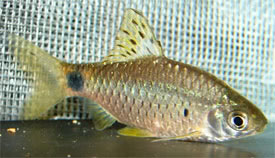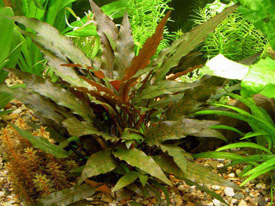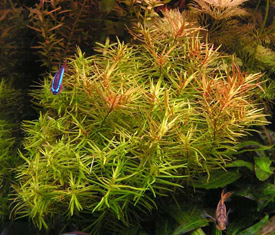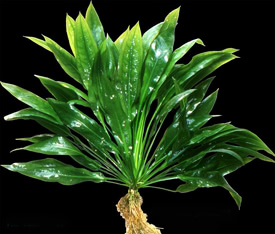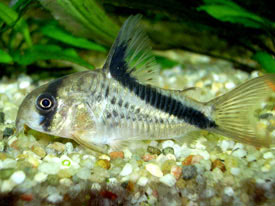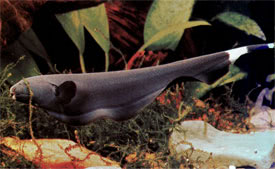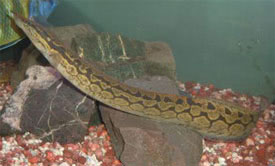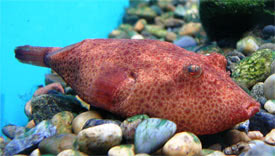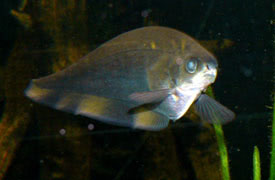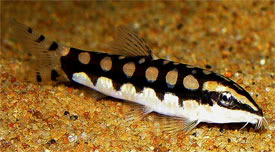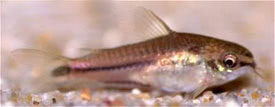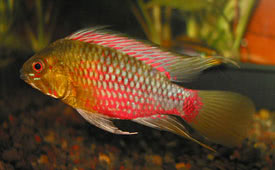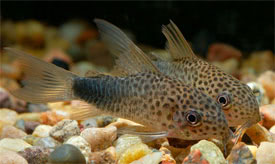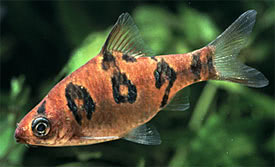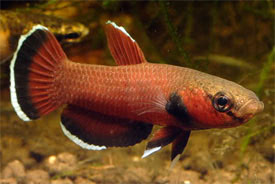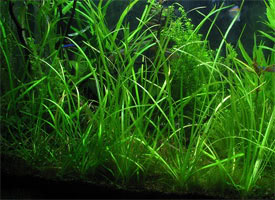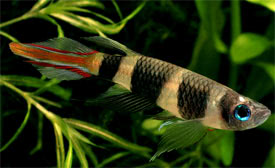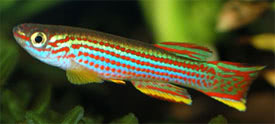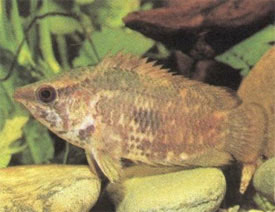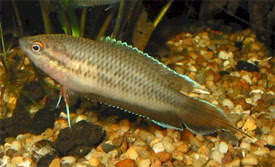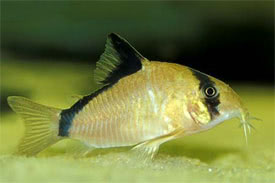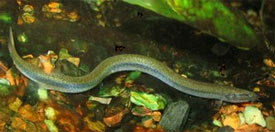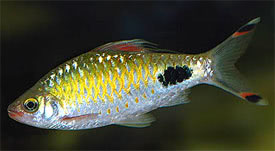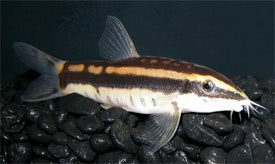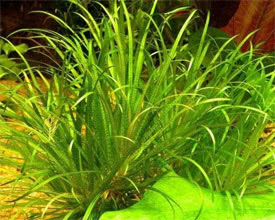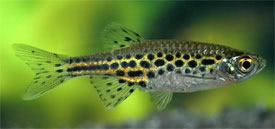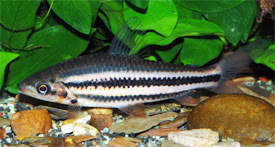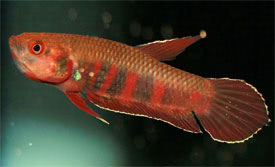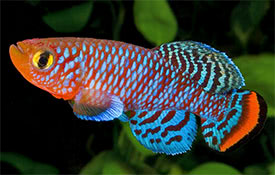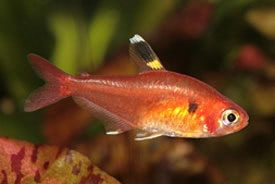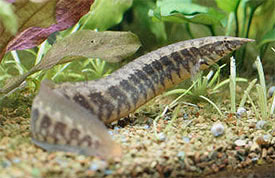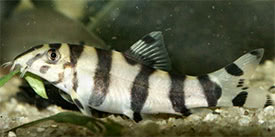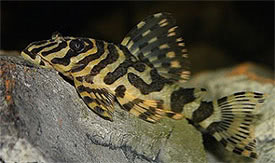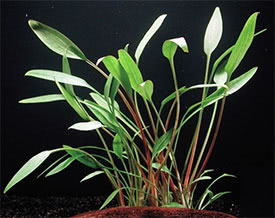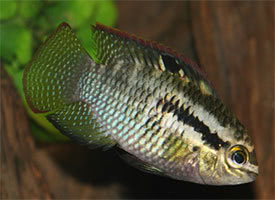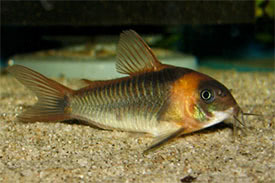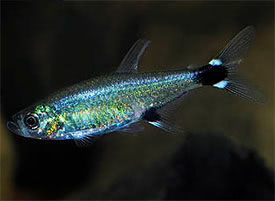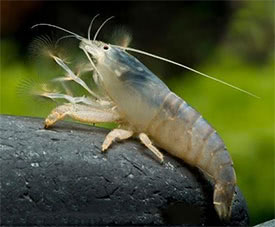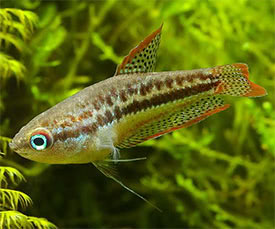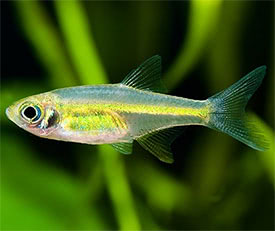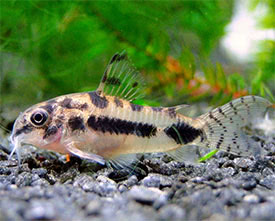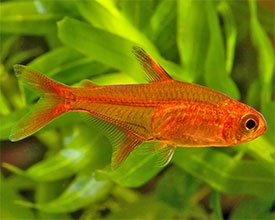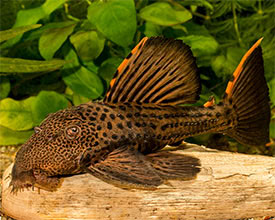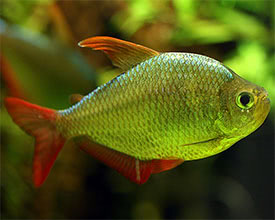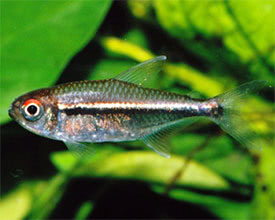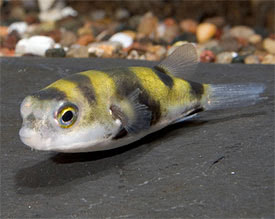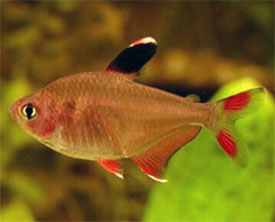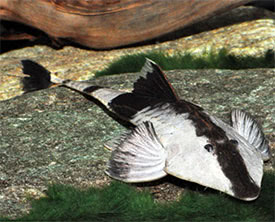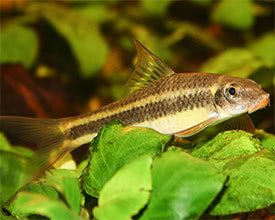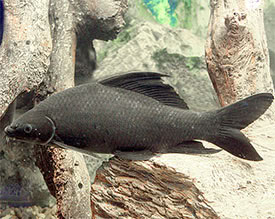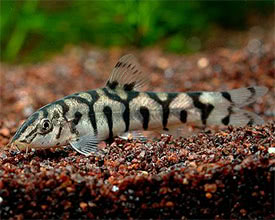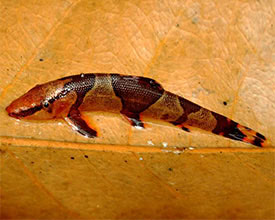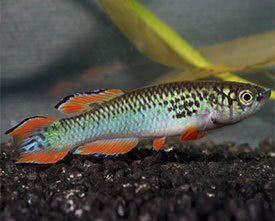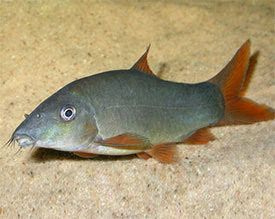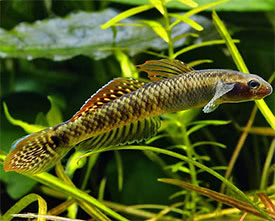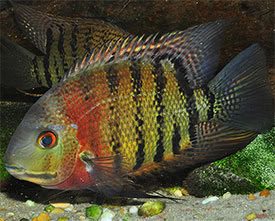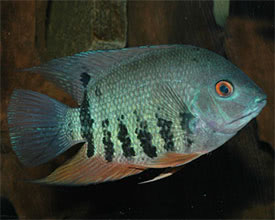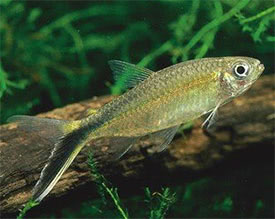Leporinus fasciatus - Banded Leporinus
 Magyarul / Hungarian
Magyarul / Hungarian

 Magyarul / Hungarian
Magyarul / Hungarian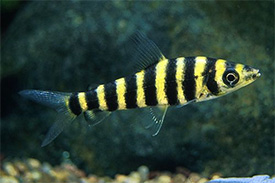

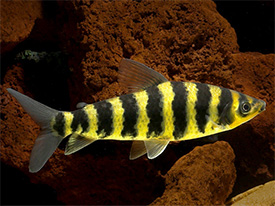
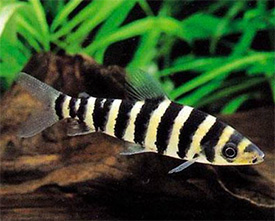
- Scientific name: Leporinus fasciatus
- Synonyms: Salmo fasciatus (Bloch, 1794), Leporinus novemfasciatus (Spix & Agassiz, 1829)
- Common name: Banded Leporinus
- Group: Characins
- Distribution: South America; Amazon basin, Brazil, Bolivia, Peru, Venezuela, Guyana, Suriname and French Guiana
- Size: 25-27 cm
- Biotope: Found in main river channels, smaller tributaries and floodplain lakes. During the wet season they swim out to flooded areas.
- Social behavior: Active fish, they develop a social hierarchy, and equally sized fish will fight much harder with each other. Once the hierarchy is established the fish live in relative harmony together. They should be kept in groups of 6 or more species. Ideal tankmates for larger South American Cichlids.
- Diet: Omnivorous; Feeding on algae and invertebrates in nature, but stomach contents of wild fish contained a mixture of fruits, sedds and even small fish. They are unfussy eaters in the aquarium and will accept dried foods too.
- Breeding: Unsuccessful in aquarium.
- Tank: Minimum 600 litres
- Population: 5-6 fish for 600 litres
- Decoration: Sufficient swimming space is more important than decoration in the aquarium. Use a sandy substrate with some leaf litter that will color the water. Decorate the tank with some large driftwood branches and twisted roots. They are excellent jumpers, so a tight fitting cover is essential.
- Temperature: 20-28 °C
- pH: 5.0-7.5
- Hardness: 1.0-15.0 dGH
- Lifespan: 7-10 years
Description: The Banded Leporinus has an elongated, heavy, torpedo-shaped body with a yellowish base color and vertical dark bands. The dark bands on the body are actually multiply with age, with young fish possessing only 5, and as they grow these split every 6 months or so, until the fish achieves its adult patterning with 10 bands. The yellowish base color of the fish will be more orange as they grow too. You can actually determine the approximate age of this fish by counting its bands. The fins are transparent, sometimes with a black hue. They are usually reaching 30 cm in the length in the wild, though in captivity they generally grow smaller. They require a large aquarium with base dimensions of at least 210x60 cm, because these fish need swimming space. Young specimens are often traded for aquaria without warning as to their potential size and requirements, therefore they often outgrow small tanks.
Mature females grow slightly larger and tend to be rounder-bellied than males.
There are no reports of their successful aquarium breeding. In their natural habitat breeding takes place from December to May during the wet season, when they migrate into flooded forests where they spawn amongst dense aquatic vegetation. They reach sexually maturity at 15 cm.
Sources:
https://www.fishbase.de/summary/Leporinus-fasciatus.html
https://www.seriouslyfish.com/species/leporinus-fasciatus
https://animal-world.com/encyclo/fresh/characins/leporinus.php
https://www.fishbase.de/summary/Leporinus-fasciatus.html
https://www.seriouslyfish.com/species/leporinus-fasciatus
https://animal-world.com/encyclo/fresh/characins/leporinus.php
Hasonló vízparamétereket igénylő fajok








